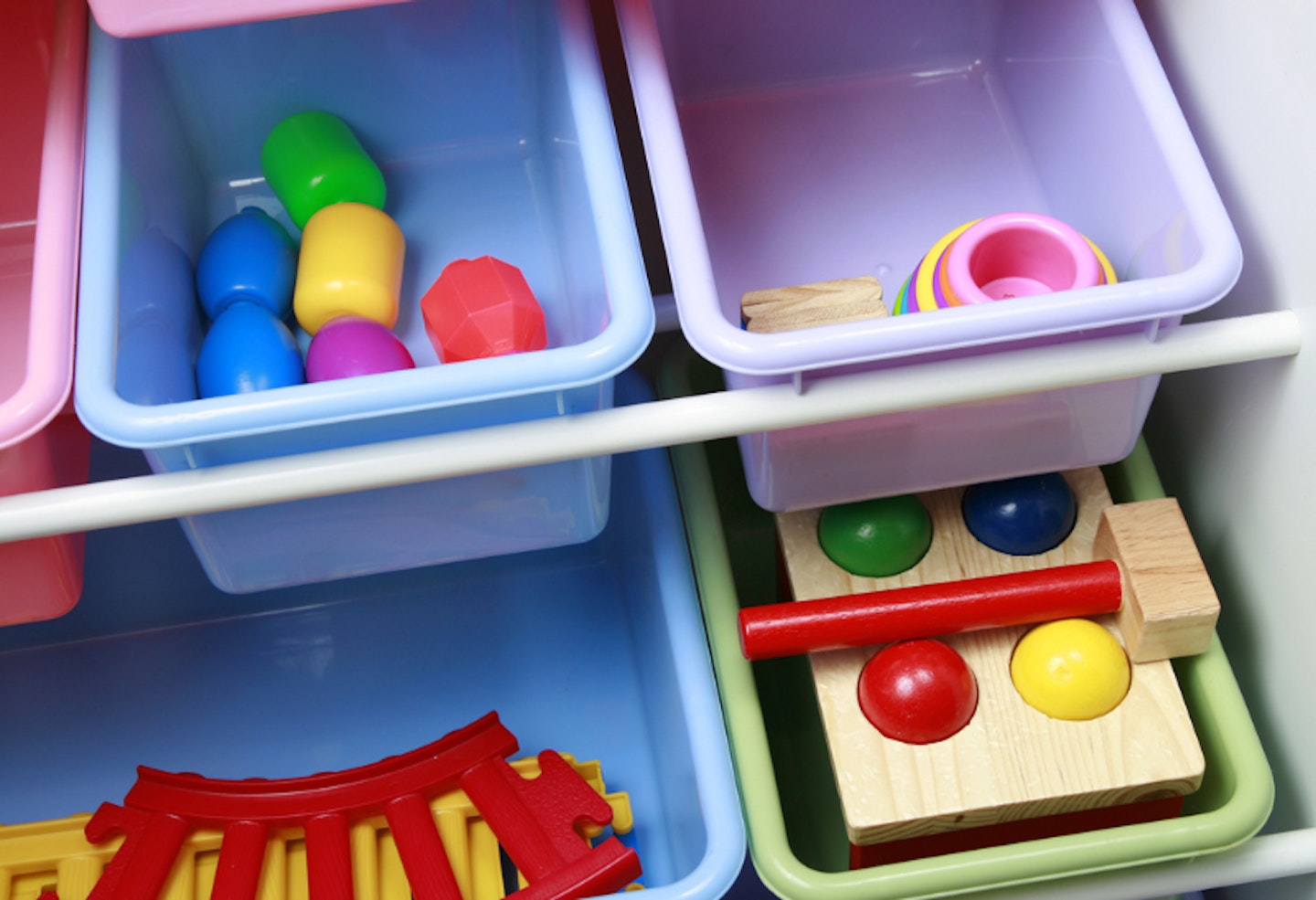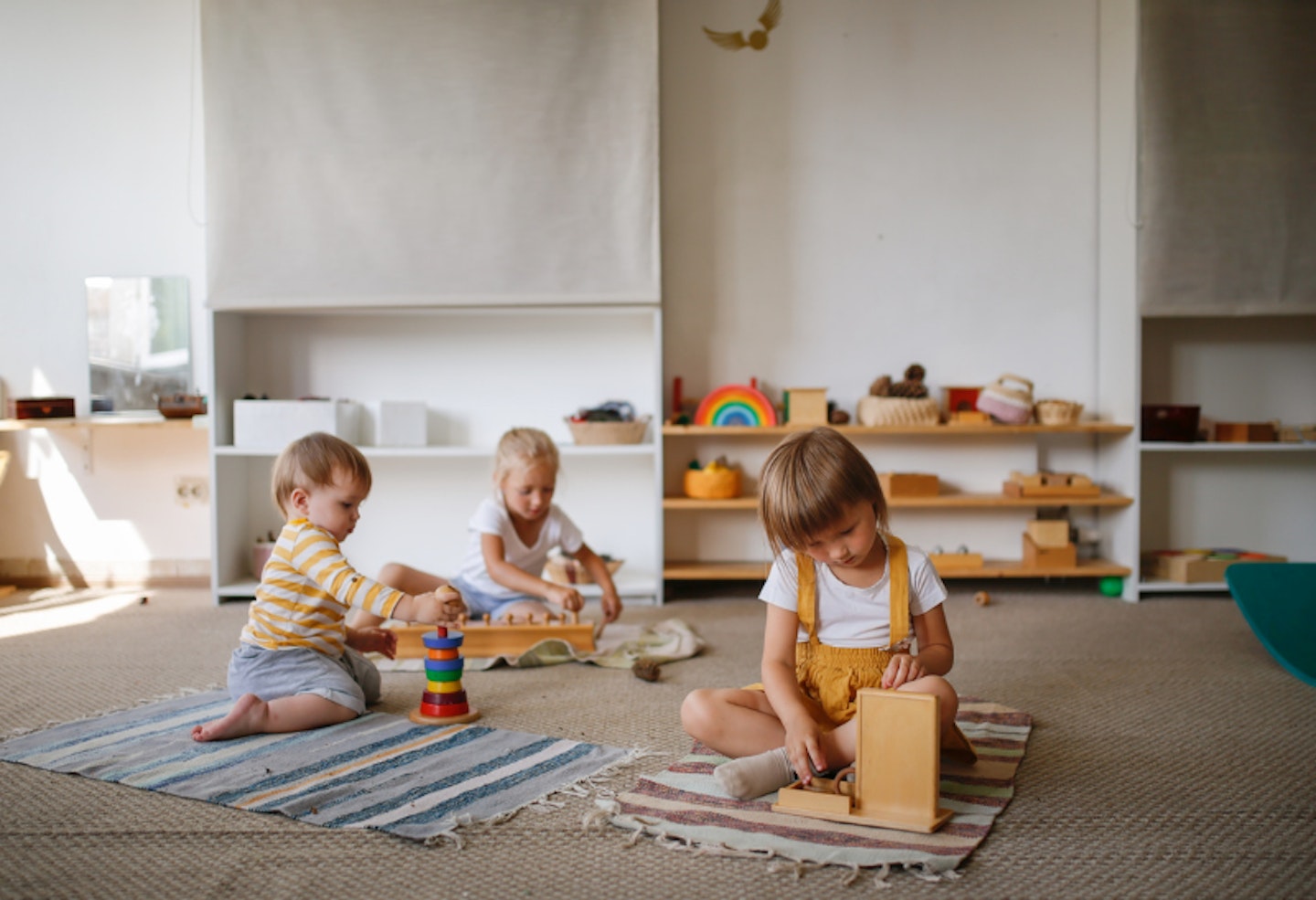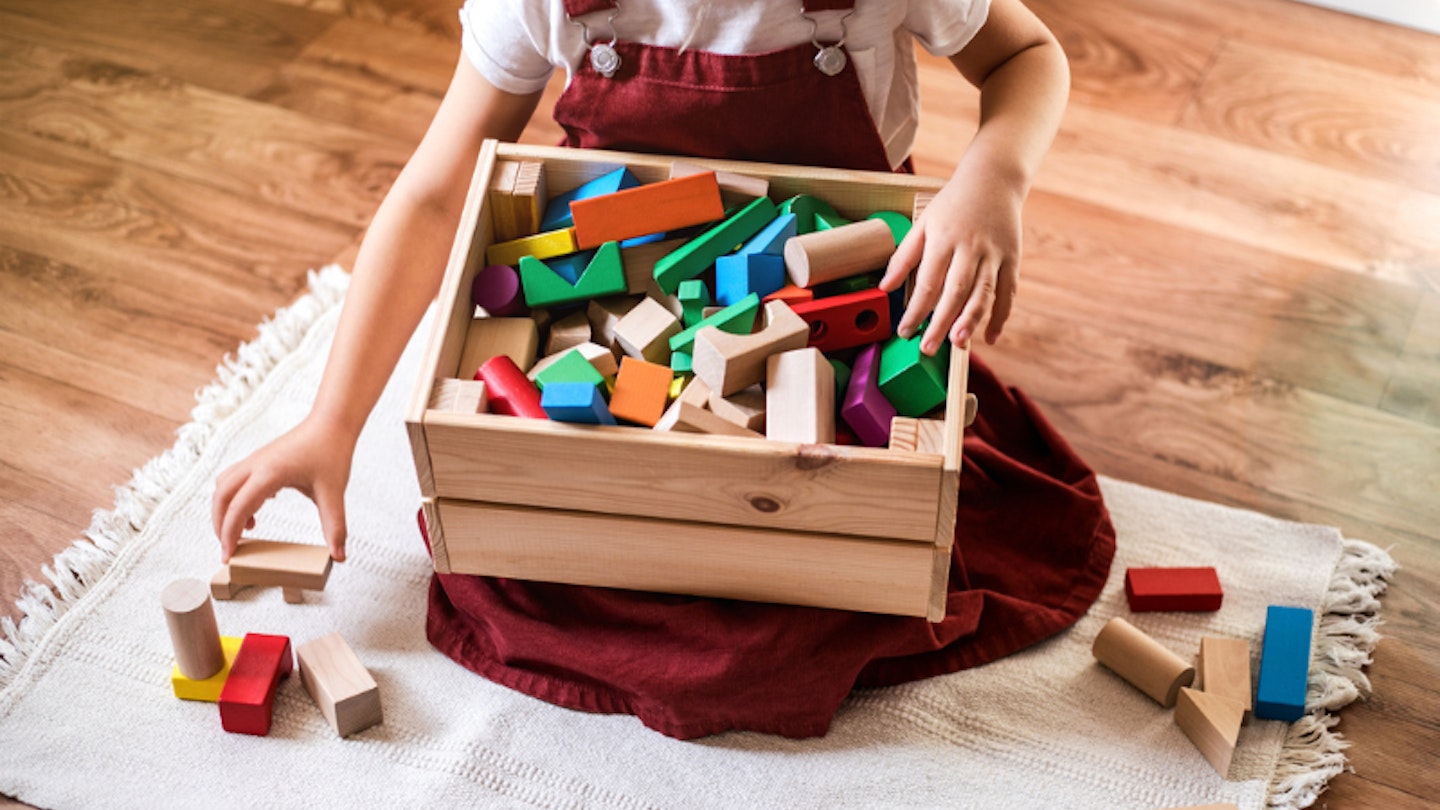Toy rotation has become something of a buzzword on parenting blogs of late, and it’s not hard to see why. With its roots in Montessori, it’s a means of preventing toy overload – indeed, research published in Psychology Today has shown that toddlers presented with fewer toys (four, in the case of this study) experienced more engaged, creative, and varied playtime with those toys than a group presented with more toys.
Now, we know what you’re thinking: with so many relatives keeping your little ones well supplied with toys every Christmas and birthday and all the days in between, how on earth are you supposed to reduce your child’s playthings to just a handful of toys? And what happens, too, when they inevitably grow tired of the toys you choose to have on display? Well, that’s where toy rotation comes in!
The idea is simple: you go through your child’s toys and select a handful of different items – for example, one set of blocks, a puzzle, a doll, and a set of animal figurines – to have our on display. Pop the rest of your child’s toys into storage, so that they’re out of sight, and voila! Toy rotation complete (until it’s time to swap your chosen few out for something new, of course).
It sounds like a lot of work, sure, but toy rotation is packed full of benefits – both for our children and our groaning shelving units and toy chests. And, once you get into the swing of things, you’ll wish you’d been doing it all along.

How many toys for rotation?
To start, less can often be more when deciding which toys to introduce or rotate for your child.
“From an educational perspective, 3-4 toys can provide your child with all the learning and stimulation they need to develop and learn,” says Aoife Lee, Parent Coach and founder of Parent Support. (It’s worth noting that some parents might prefer to keep 8-10 toys out, but ideally no more than this).
“There is often quite a focus on younger children in terms of child development and educational toys. As children get older, they often have more of a say in the toys they play with, for older primary school children and pre-teens, sports, investing in hobbies, clothes, self-care products and devices are often prioritised.”
The benefits of toy rotation
As well as clearing some much needed space in your home (and cutting down the time needed to tidy up after each play session), toy rotation is packed full of benefits.
“It helps keep the toys available to your child at a manageable level,” says Aoife. “You may not have considered it before, but children are free to flex their imaginations when given fewer toy choices. Einstein was right when he said, ‘the true sign of intelligence is not knowledge but imagination.’”
Aoife isn’t wrong: while it’s easy to assume a child furnished with lots of toys will have hours of fun, the reality is very different.
“Research has repeatedly shown that children with too many toys often become overwhelmed, frustrated and even bored,” she says.
Toy rotation, then, is a great way to counter this, as it reduces overstimulation and encourages more creative play and “outside-the-box” thinking.
How to store toys for toy rotation
“After practicing toy rotation with my own children over the years, I found that boxing up belongings that they haven’t played with for a while or are showing little interest in is a great starting point,” says Aoife.
Speaking from this hard won experience, she goes on to say that, using old cardboard boxes, durable bags or storage containers, it’s best to start by “packing up what you feel is no longer currently loved – airtight if possible, so as to maintain the condition of the toys.”
Next, label your containers so you know what treasures are inside them, and stash them away somewhere that’s out of sight. “Try an attic space, on the top of a wardrobe, under a bed or even an available space in a relative’s home nearby,” says Aoife.
What is a good toy rotation system?
Most people are of the opinion that toy rotation is best done when it best suits your child. This might be every 3-4 months – you could even theme the toys you have out on display to work alongside the seasons – or once a week, depending on your little one’s needs.
You could draw up a rota; first group your child's toys into categories - crafts, puzzles, vehicles, building, role play, soft toys - and then choose a toy that fits into those categories. Each week, month or every few months, depending on your schedule, rotate the toys so that you have one from each category. If you have the time, why not think about how those toys could be played with together. For instance, having cars and building blocks out at the same time could encourage your child to use their imagination to build bridges or ramps for their vehicles. Having a tea set and teddies out could result in a lovely teddy bear's tea party.
“If toy rotation is something you are considering, you will be amazed at the impact these old stored toys can have – it’s like they are brand new,” says Aoife, who also points out that it can be a good idea to tailor your toy rotation system to tackle points in the calendar when you find yourself overwhelmed with new things.
“If you have birthdays and Christmases close together, like we do in our house, it can be overwhelming, so toy rotation can be helpful in these scenarios!”
Remember, you don’t have to rotate all the toys at once: some old favourites can stay out all year long.

Why has toy rotation become so synonymous with the Montessori method?
Montessori is a child-centred method of education that is based on self-directed activity, hands-on learning and collaborative play – and its holistic approach has been adopted by many parents and caregivers at home, with countless social media accounts dedicated to exploring ways this can be done effectively. Montessori toys are often focused on sparking a child's imagination and allowing them to play creatively, independently and freely, while developing their understanding of the world around them. They're often relatively simple, so no flashing lights or buttons, and this simplicity allows children to focus and concentrate, using their imaginations and creativity to make that toy into more than it might seem to be.
Toy rotation is an easy way to tap into this Montessori practice and add an educational and developmental layer to your child's play.
“On some level, all children’s toys are ‘educational’,” says Aoife.
“Whether it promotes the use of the hands, concentration, social skills (sharing); kids are nearly always learning through play. However, some toys can be more educational than others and may provide more benefits as such.”
This is why the Montessori toy storage method encourages a more minimalist approach to toys, with fewer objects neatly arranged on low shelves with space between each, avoiding an overwhelming amount of choice and promoting independence, curiosity and imaginative play.
A few final tips on toy rotation
Pay attention to the toys your child interacts with (and how they like to play with them) to ensure you’re customising your toy rotation to meet their needs.
Leave out a range of toys of different categories, for instance, crafts, vehicles, dolls, soft toys, and construction.
Rotate toys on a weekly, monthly or even seasonal basis, depending on your child's needs.
Keep the toys in view so children can see and reach them easily.
Try to do your toy rotation when your child is in bed or not around, to avoid any meltdowns or tantrums. And do keep any old favourites in their same position, so the change doesn’t feel too sudden. Good luck!
About the Expert
Aoife Lee is a mum of 3 and also a Parent Coach and founder of Parent Support which supports working families in their workplace and promotes corporate wellness and wellbeing.
Kayleigh Dray is a freelance writer and editor with over a decade of experience under her belt. New mum Kayleigh covers parenting, lifestyle, and entertainment content across a number of different titles – with the odd opinion-based rant thrown in for good measure!
